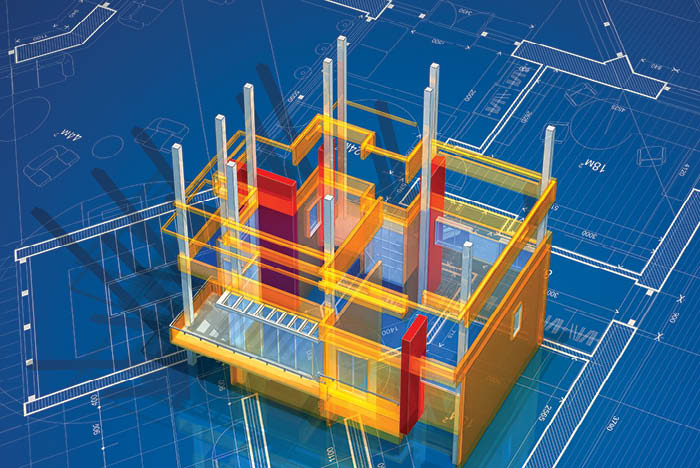Ten health care trends impacting architecture and design

Image by Getty Images
A decade ago, the authors wrote an article in Health Facilities Management (HFM) magazine on the impact of the Affordable Care Act (ACA) on facility design titled, “The Future is now: How 10 forces are changing health care design.”
At that time, it seemed clear that the political course of the ACA was evolving too rapidly to draw definitive conclusions on the matter. That was true then, and in the wake of a variety of executive, legislative and judicial machinations, it is still true.
Moreover, and more importantly, it became clear then that there were far greater issues impacting health care design than the political outcome of the ACA. Such is still the case.
The 10 trends
In the earlier article, the authors identified what they considered to be the major influences guiding the future of health care facility design.
In this article, each one is revisited to consider its continuing relevance in the future as a major influence on the health care system and health care design in particular. Where the topic from 2011 has evolved to include additional important dimensions, the authors have used a decimal suffix (e.g., Force 3.1 or 4.2) to highlight the subpoints.
These major influences include the following trends:
1. Fall in reimbursements. The final issue in 2020 of Modern Healthcare began by summarizing the year with “Cost-cutting enters overdrive.” And interestingly, 10 years earlier, the Dec. 20, 2010, issue of that same magazine noted that “Hospitals brace for reduced revenue growth.” So, has anything changed in the past decade? The response may be “not much.” Polsinelli Healthcare Solutions has reported that its “health care services distress research index” jumped since the first quarter of 2020 and that the overall Chapter 11 index rose 14 points from the previous quarter.
• Implications. As health care wrestles with the challenges of transitioning from volume to value and absorbs the growing market priority of maintaining good health versus providing care for compromised health, the ability to generate excess revenues to underwrite the costs of transition becomes extremely important. In a market of diminishing revenues, there will be pressure to find capital partners to help fund organizational transition away from the priority of seeing more patients to the new priority of keeping patients healthy with reduced need to utilize the health system resources.
2. Focus on transparency and quality. The forces identified a decade ago remain strong, but the outcomes remain elusive. Modern Healthcare, in its Jan. 11, 2021, issue, stated that “information is often difficult to find, unclear, and nearly impossible for the vast majority of consumers to understand or use effectively.” In addition, there is more to quality than has been understood in the past. According to the Johns Hopkins Center for Health Equity, press coverage of COVID-19 throughout 2020 indicates that there is a disproportionate impact of COVID-19 on communities of color (Force 2.1).
• Implications. With the Institute for Healthcare Improvement’s Triple Aim of improving patient care (including quality and satisfaction), improving population health and reducing per capita health costs; and the military health system’s Quadruple Aim, which adds “readiness” to the Triple Aim, the spotlight on metrics and accountability in health will continue to shine. However, unless a way can be found to make those metrics understandable, it will be difficult to move this too far beyond a rallying cry.

Designers must be attentive to the impact of travel distances, sight lines and presumptions of fewer staff members performing many tasks.
Image by Getty Images
3. Importance of information technologies. The March 2011 HFM article stated, “Not only will IT be central to health care delivery, it will foster far greater ability for ‘virtual’ delivery, independent of traditional care settings.” Clearly, that prediction of “virtual” delivery could not have been more accurate. Increasingly, technology companies are building alliances with health systems, big pharma, policy groups and insurers to develop management strategies for implantable health technologies generating 24/7 data streams to the cloud or cellphones or a distributed receiver network.
• Implications. Moving forward, the far bigger stories in IT will be the tsunami of health data that virtual technologies are causing, and the resulting pressure to develop artificial intelligence (ArI) tools to make data processing not only manageable, but useful. And ArI will quickly give way to high demand for augmented intelligence, by which systems will be able to progress effectively and efficiently through big data analysis by parameters that are content-based and distribute the findings using parameters that are user-based.
4. Looming challenge of staff shortages. In the 2011 article, the authors noted that “Efficient delivery of services will be more important than ever, and designers must be attentive to the impact of travel distances, sight lines and presumptions of fewer staff members performing many tasks. In many cases, this will require employing e-Health and m-Health technologies.” All of the aforementioned have become the reality of health care delivery today. The COVID-19 pandemic has brought the staffing shortage to center stage and put a spotlight on our vulnerability to staff heroically working miracles in insufficiently flexible buildings.
• Implications. The health system needs to quickly assess the lessons learned from this provider crisis, and not just to prepare for the next pandemic. According to Nurse Journal, “As the baby-boom generation continues to age and overall population numbers increase, the demand for nurses continues to grow. However, the gap between available jobs and people graduating nursing school continues to expand.”
5. Accelerating migration of care to the community and the home. Identified in the 2011 HFM article, this trend has been accentuated recently by COVID-19. Telemedicine (Force 5.1) and telework (Force 5.2) have combined to fuel the migration away from traditional settings. The migration of care and workforce has led some to question the definition of a “hospital” (Force 5.3). Ten years ago, most design professionals confidently believed that they knew what the definition was but, as care migrated to unfamiliar settings, the old norms fell away and providers sought the highest possible level of reimbursement, that traditional setting has been redefined. Notably, the Centers for Medicare & Medicaid Services (CMS) stated in September 2017 that two beds could constitute a “hospital,” depending upon some given parameters.
• Implications. The recent surge in the migration of care and of care providers has contributed to two additional significant developments. Tele-anything has morphed from its infancy as the connective tissue linking the health care system to innovations and novelties in tele-devices into its emerging posture as the main skeleton of the health care system with traditional components evolving into the add-ons. This shift has enormous facility implications. In addition, the shift to telehealth and the self-awareness that COVID-19 has engendered has helped the population to dial into health issues with a newfound sense of urgency and priority, which will contribute to the data tsunami mentioned earlier.
6. Imposing legacy of obsolescence and poor location. As noted in the article a decade ago, this is still an issue, which is exacerbated by the changes in severe weather patterns, population migration trends and the increasing dependence on health care technology that tends to experience accelerated obsolescence. With the growth in telehealth activities, the dependence on facilities is reduced, and the liability of poor locations and older, inflexible facilities is likewise diminished. Where facilities remain an important part of the community health equation, resiliency (Force 6.1) has emerged as a meaningful concept, not just in community development, but in facility design. The ability to maintain mission-critical functions, regardless of surges in demand or hazards from the weather, has become a key health system concept.
• Implications. As health systems evaluate the impact of telehealth on their ability to serve their constituents and as they review their responses to the challenges of demand surge during the pandemic, a haunting question will likely come to the fore. Operators of temporary facilities — the makeshift surge response units — found a way to become approved for payment for the services rendered. So, if mission-critical care delivered in quickly assembled, temporary or makeshift facilities without the benefit of a comprehensive and thoughtful design based on accepted design guidelines and standards was good enough to collect payment, how long will it be before health systems ask themselves why they are spending much more on their facilities?

As the telehealth movement gains momentum, facilities use, development and retrofitting will likely become topics of conversation between different health systems.
Image by Getty Images
7. Changing structure of the medical care model. In the 2011 article, the authors called attention to the unsustainable path of trying to make efficient design a substitute for a new model of care. As important as efficient design is, the real need then as well as today is for a business model that moves the priority away from the relentless pursuit of more patients and more procedures and toward a greater emphasis on quality of care and better health at a lower cost (Trend 2). It has become a popular refrain: from volume to value. Getting there is the challenge.
• Implications. As health systems wrestle with the growing impatience by the public to experience this shift in health care priorities, watch for the financial pressure that builds as health systems struggle to find a way to pay for the transition. Migrating from fee-for-service to a capitated business model will likely create financial challenges in managing long-term and short-term capital investments, as well as the extant capital debt in facilities, services and technologies no longer the primary business drivers. Look for partnerships between health systems and enterprises capable of financing the management of capital debts and investments. And as the telehealth movement gains momentum and becomes the backbone of the health care system, facilities use, development and retrofitting will likely become topics of conversation between different health care systems, not just within health care systems, as shared costs and risks for fully integrated regional, national and international tele-networks become the norm.
8. Increasing priorities of promoting health and reducing demand for medical care. As mentioned in 2011, although it is relatively easy to argue that a nation wants better health, the underlying issue is the divergent perspectives of health as an individual’s right versus a society’s collective obligation. COVID-19 has highlighted this polarization. Further fueling this tension is the movement toward “precision medicine,” promoted by the National Institutes of Health under the guidance of Eric Dishman, which strives to develop a robust data base that can permit targeted health plans at the individual level (Force 8.1). Equally important, the private sector continues its march toward population health, yet the movement is fragmented for now. CVS, Walmart, Haven and others have developed major initiatives. Notably, Haven, even with the backing of Amazon, Berkshire Hathaway and JPMorgan Chase, was unsuccessful in its initial form.
• Implications. The United States has consistently scored poorly in the Commonwealth Fund’s “Mirror Mirror” surveys of the health systems in the world’s most developed nations. A transition to a focus on population health should help the U.S. ranking, but the history highlights the difference between a health system whose focus is population health and one whose focus is medical care and highly complex procedures, often at the expense of population health.
9. Lingering confusion by the capital markets. While the earlier 2011 projections remain valid, the past decade has seen an emphasis on “speed to market,” which has trumped a number of more traditional approaches to health system growth. Design and construction professionals have responded with two key strategies that have redefined project delivery: prototyping and standardization (Force 9.1), and off-site prefabrication of major components (Force 9.2). The aforementioned standardization has taken many forms, ranging from Kaiser Permanente’s “template hospitals” dating back well over a decade to ongoing initiatives by other health systems to standardize their brand and offer consistent physical settings across multiple geographic locations. Speedier delivery of a facility or technology does not create protection against disruptive technologies, and even more important than speed is the ability to move with a minimal capital footprint.
• Implications. Confusion in the capital markets is creating opportunity for innovations in project finance and deal structure. Overlaying each of the aforementioned is the rise of the importance of private equity (Force 9.3), which is rewriting the rules of health care development.
10. Growing concern about health care’s impact on national security. In 2011, the expressed concern related to the prospective threat of the health care sector reaching a window of imbalance within the U.S economy, similar to the imbalance created by the Soviet military through the 1980s that led to the demise of the overall Soviet economic and political status in the world. In 2011, U.S. health care, as a percentage of overall gross domestic product, was nearing 18%, and many feared it would continue its trajectory to 20-25%, the tipping point for seriously interrupting the national economy. According to CMS records, that greater risk never materialized.
However, health care now offers a new vulnerability. Its infrastructure is vulnerable to cybercrime, both foreign and domestic (Force 10.1). “[Health care] in particular has drawn the attention of hackers. For 2018 through the end of October, there were 306 breaches of health care organizations reported to HHS’ Office for Civil Rights,” per Modern Healthcare as of December 2018. On Nov. 16, 2018, the Cybersecurity and Infrastructure Security Agency Act of 2018 was signed into law, establishing the Cybersecurity and Infrastructure Security Agency (CISA). More recently, the 2020 Homeland Security Threat Assessment Findings of Note, dated Oct. 6, 2020, stated that, “The COVID-19 pandemic is creating new opportunities for the United States’ economic competitors to exploit the American people.”
• Implications. As health organizations migrate to a greater dependence on information and essential big data analytics and metrics experience strong pressures for transparency, health systems will continue to treat IT infrastructure as having the potential for catastrophic disruption to operations. The recent pandemic has shown us the extraordinary interconnectedness of the nations of the world, and the unparalleled vulnerability those linkages create.
The pandemic experience
The earlier article concluded under the heading of “More with less” and, arguably, those three words are as true in 2021 as they were in 2011. The key characteristics for the future, as identified in 2011, included deferred inpatient projects; growth in retail and home-based delivery; demand for efficiency; preoccupation with quality; and focus on research-driven planning and design. Those certainly remain priorities in 2021.
But perhaps the most overarching observation about the future for health care is related to the recent pandemic experience. In ways that nobody fully anticipated, people saw firsthand the reality of the interconnectedness of the nations and the attendant vulnerability of those connections. The U.S. health care system was pushed, massaged, squeezed and impacted by things that happened on the other side of the world in ways that it had not experienced in recent memory, if ever.
The need for flexibility, resilience, data analytics, communications and the creative management of system capacity was on full display, and it was no longer a discussion limited to what our health care system needed to do. We found that we could not effectively operate a health system in a vacuum, locally, regionally or even nationally without regard for the health systems of the world. That awareness will impact everything about the future of U. S. health care, including:
- Global and national perspectives on how everything from crisis-driven inpatient care to home-based telemedicine contributes to the value proposition in personal health.
- Disruptive technologies in both the clinical and infrastructure arenas, given the juxtaposed threat of cybercrime with the promise of ArI.
- Redefinitions of concepts like “speed to market” and “market service area,” given the increasing role of virtual care in establishing market presence.
- Continuing advances in precision health, emerging as the tidal wave of 24/7 personal health and environmental data monitoring technologies and the surge of genomic insights converge to enable individualized health care approaches previously known only in science fiction.
Peter L. Bardwell, Emeritus FAIA and FACHA, LSSYB, is principal at BARDWELL+associates LLC, Columbus, Ohio, and A. Ray Pentecost III, DrPH, FAIA, FACHA, LEED AP, is director of the center for health systems and design in Texas A&M University’s college of architecture and holds the Ronald L. Skaggs and Joseph G. Sprague chair of health care facilities design. They can be reached at pbardwell@bardwellassociates.com and rpentecost@tamu.edu.
About this article
This feature is one of a series of articles published by Health Facilities Management in partnership with the American College of Healthcare Architects.
The opinions expressed in this article are those of the authors and don’t necessarily reflect the views or positions of the American Hospital Association or the American Society for Health Care Engineering.




